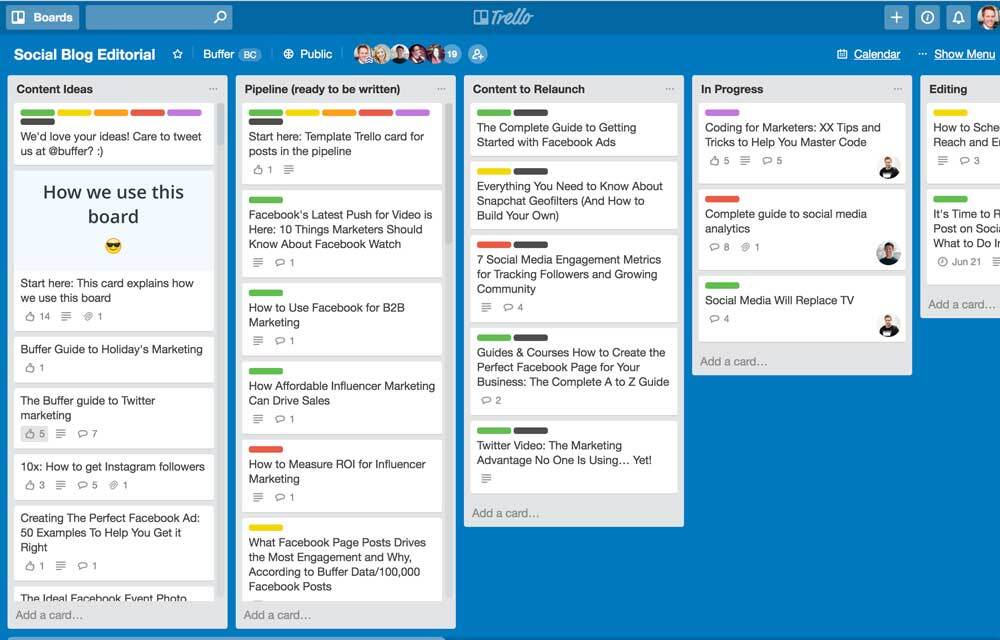Trello
Trello has gradually become one of the best-known project management tools on the market, and is now the preferred solution for thousands of businesses of virtually every size. Its simple interface and smart branding might suggest that it’s primarily a to-do list tool, but dig a bit deeper and it quickly becomes clear that Trello offers a range of powerful functions to help teams manage their work effectively.
Trello arranges work by cards, lists, and boards. Cards might be individual tasks or deliverables; lists are groups of similar cards; and boards are groups of similar lists. For example, you might create a board for your content marketing activities, within which you might have a list for each of your content channels, and cards within each list detailing specific pieces of content. Users can easily be assigned to individual cards, and all of the collaboration tools you’d expect are easily accessible.
The platform really comes into its own, however, with its Power-Up systems. These add-ons introduce rich additional functionality including integrations with other popular platforms such as Salesforce, Slack, GitHub, and Google Drive. Power-Ups allow businesses to use Trello as a central hub through which they can manage multiple workflows. The well-designed mobile apps also mean that teams and their work can stay in sync wherever they are.
Trello offers a generous free plan designed primarily for personal users, but with ten free team boards also included it may be suitable for very small organisations. Most businesses, however, will want to investigate the Business Class tier, which includes unlimited Power-Ups, various automation tools, and priority support. Business Class is priced at $9.99 per user per month, or for large teams an Enterprise solution is available at $17.50 per user per month.
Best for
Small, medium and large businesses
Features
- Customisable templates
- Time tracking
- Integrated calendar
- Deadline alerts
- Resource management
- Budget management
- Gantt charts
- Kanban boards
- Integrated chat
- Agile development
- API
- Mobile app
- Live support
- Free trial
Deployment
Cloud, SaaS, Web
Mobile - Android Native
Mobile - iOS Native

